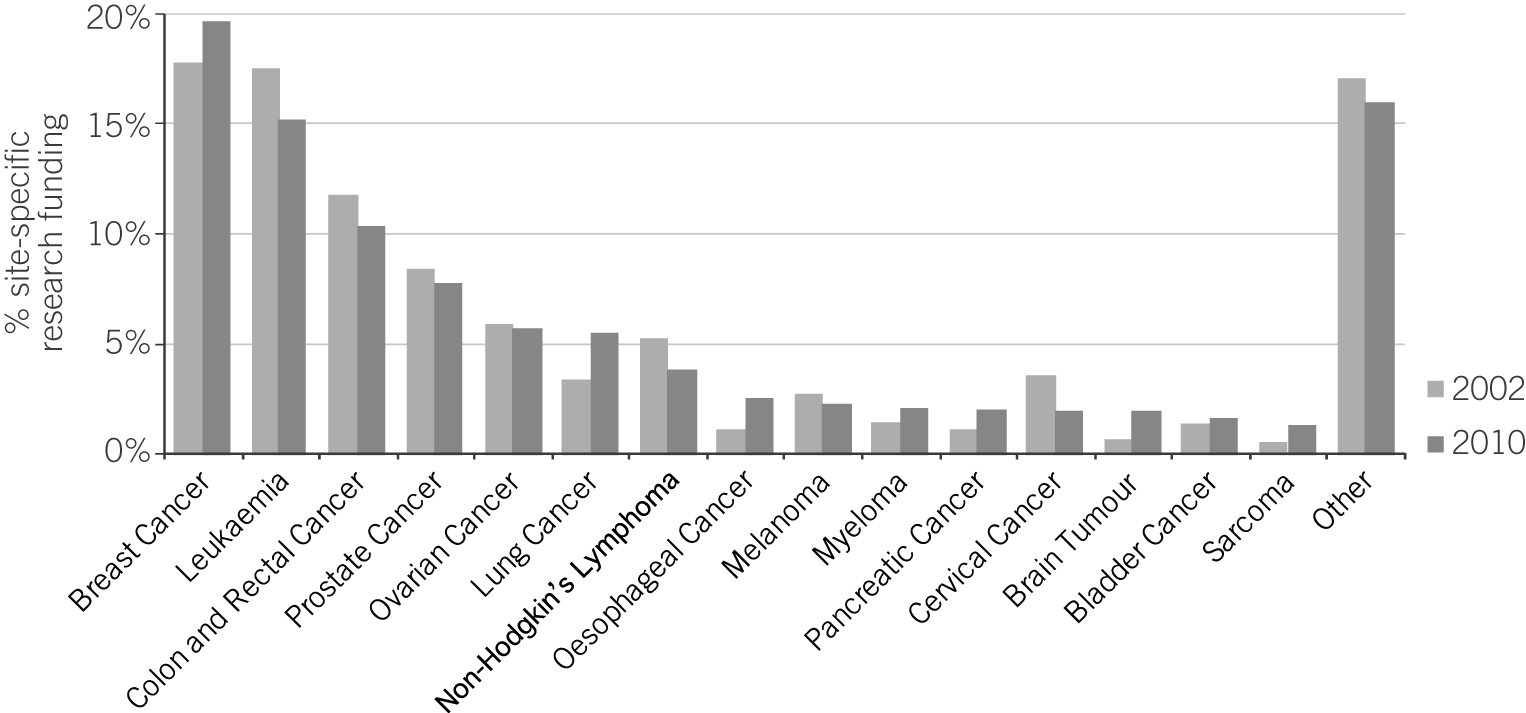The Funding Gap
The National Cancer Research Institute (NCRI), is a UK-wide partnership that promotes co-operation between the government, charity and industry in cancer research. The brilliant news is that the annual spend in cancer research by the NCRI had reached £500 million by 2010.

The Funding Gap
Funding for brain tumour research has improved a good deal in ten years. However, it still gets just 2% of the available money. That equates to an annual spend of roughly UK£10 million. To put these figures into perspective, according to statistics from the National Audit Office, since the 2007 crisis the UK Government has bailed out the banks to the tune of UK£123.93 billion. I wonder about a society that spends billions of pounds lining the pockets of our banking institutions, while children with cancer are left to suffer, due to a lack of funding for the research that might cure them.
The situation in the U.S.A is no better. Just like the UK, paediatric brain tumours there have one of the highest death rates of all childhood cancers. They also have one of the lowest levels of research funding. According to their National Cancer Institute, in 2010, US$2.16 billion was spent on cancer research. Approximately 4% of that was budgeted for paediatric cancer research and just 8% of that was specifically targeted at paediatric brain tumours. That equates to approximately US$7 million, or just 0.003% of the total spend.
Without increasing the money put into research, there is little hope of improving treatment for paediatric brain tumours, and they will remain a significant cause of cancer deaths. Some charities have been very successful in raising funding by raising the profile of the disease they champion. A good example is breast cancer, which has achieved global recognition through the brilliant Pink Ribbon campaign. As a result, breast cancer is by far the best-funded area of cancer research in the UK, with approximately ten times the annual spend of brain tumour research. Brain tumours need the same high profile to get the necessary funding. It’s how we could offer our children fighting the disease a brighter future.